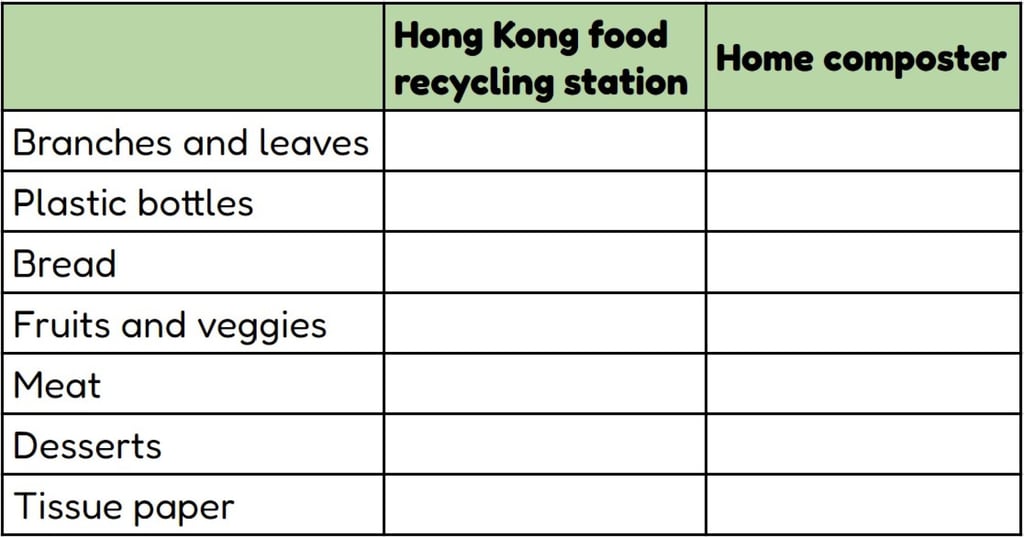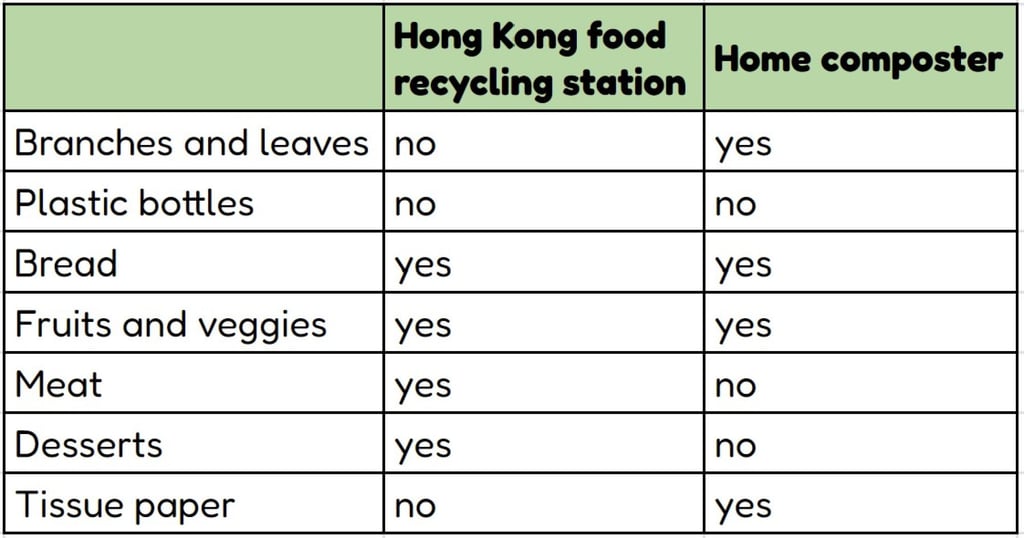
Learn how to compost at Hong Kong’s food waste recycling stations or even at home
Remember the importance of the 3Rs: reduce, reuse and recycle, and try our activity for composting at home.




Difficulty: Explorer (Level 1)
H ong Kong is very concerned about its amount of environmental waste. We throw many things away and let them rot in landfills.
Smart living involves the 3Rs: reduce, reuse and recycle. Reduce the amount of things you buy, and reuse them if possible. Recycle them once you can’t use them any more. Then, their materials can be made into brand-new products. You can also upcycle and turn old clothes into new ones.
Composting is one way to reduce waste. Food and plants can be turned into fertiliser, which helps new plants grow. You can take your food waste to one of Hong Kong’s special recycling stations or try composting at home!
What can be composted?
Go online to research what can and cannot be composted in food waste recycling stations or in a home-made composter. Use the chart below as a guide, and check out the answers on the bottom of the page:

How to make a home-made composter
Materials
-
a storage bin over 60cm tall and a lid with holes (or ask an adult to help you drill holes into the lid)
-
dead leaves and twigs
-
soil
-
compost material like banana peels and eggshells
-
spray bottle of water
-
small garden shovel
Instructions
1. Find a bin and ask an adult to drill eight to 10 small holes in the lid.
2. Fill the bottom with your “brown” ingredients, such as dried leaves and twigs. It should fill about one-quarter of the bin. Then, add dirt until it reaches halfway up the bin.
3. Toss in your “greens”: food scraps such as fruits and vegetables, coffee grounds or tea bags, grass clippings, and even paper towels.
4. Mix it all up with your garden shovel.
5. Spray the mixture with water until it’s moist. Don’t add too much water.
6. Find a place to store it. Make sure that it has shade, or else it could dry out. It’s best if you can store it outside.
7. You’ll need to mix it every few weeks. You will know it’s done when it’s crumbly, has the same temperature as the air, and doesn’t smell sour. This process can take a few months or even a year, so be patient. Then you can use it in a flower bed or for other plants!
Answers

